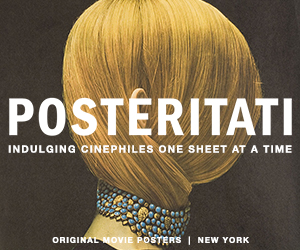A less precious parable than Au Hasard Balthazar, Robert Bresson’s final film nonetheless incorporates key elements and themes from not only that masterpiece, but also A Man Escaped and Pickpocket. Based on a Leo Tolstoy short story and translated as “Money,” L’Argent details the far-reaching implications after two teens pass off a counterfeit bill at a camera shop. Sin spreads—deceit leads to guilt leads to denial leads to bribery leads to robbery leads to murder—and not much grace follows. (This is especially true for a truck driver, played by Christian Patey, who unwittingly becomes a scapegoat and eventually ends up in jail.)
Given the comparatively contemporary setting here, at least for a Bresson film, the emotionless performances are even more jarring than usual; in color and on modern streets, his actors really do come across as robots. Yet as a 1983 release, the movie allows you to draw an even more direct line from Bresson to his spiritual heirs: the Dardenne brothers, Asghar Farhadi, and especially Krzysztof Kieslowski, whose Decalogue includes a few installments that play out much like L’Argent does. As with Bresson, each of these filmmakers looks at people as primarily moral creatures, who are struggling to live under such demands.
Other formal touches, however, remind you that this is distinctly Bresson. L’Argent includes countless close-ups of hands, often exchanging money or goods of some kind. To be corporeal, the movie suggests, is to live amidst transaction. The movie also includes what counts as a Bresson action scene, considering there is a bank robbery. True to form, though, it’s mostly depicted via offscreen sound.
As a final film, L’Argent strikes a somber tone. Patey’s trucker is offered grace in the third act, when an older woman provides refuge in her country home, but let’s just say he has trouble accepting it. The movie then abruptly ends with a curious crowd scene: as the main action in the frame concludes and the characters involved walk offscreen, the people gathered continue to look into the now-empty room until the screen goes dark. Crime and punishment have both run their course. Surely there must be something more?



